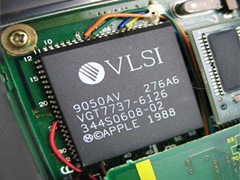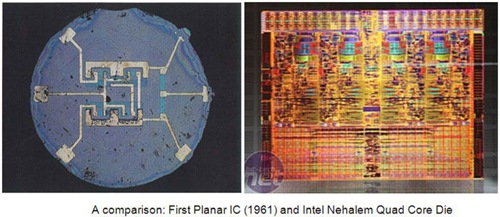 Gone are the days when huge computers made of vacuum tubes sat humming in entire dedicated rooms and could do about 360 multiplications of 10 digit numbers in a second. Though they were heralded as the fastest computing machines of that time, they surely don’t stand a chance when compared to the modern day machines. Modern day computers are getting smaller, faster, and cheaper and more power efficient every progressing second. But what drove this change? The whole domain of computing ushered into a new dawn of electronic miniaturization with the advent of semiconductor transistor by Bardeen (1947-48) and then the Bipolar Transistor by Shockley (1949) in the Bell Laboratory.
Gone are the days when huge computers made of vacuum tubes sat humming in entire dedicated rooms and could do about 360 multiplications of 10 digit numbers in a second. Though they were heralded as the fastest computing machines of that time, they surely don’t stand a chance when compared to the modern day machines. Modern day computers are getting smaller, faster, and cheaper and more power efficient every progressing second. But what drove this change? The whole domain of computing ushered into a new dawn of electronic miniaturization with the advent of semiconductor transistor by Bardeen (1947-48) and then the Bipolar Transistor by Shockley (1949) in the Bell Laboratory.
Since the invention of the first IC (Integrated Circuit) in the form of a Flip Flop by Jack Kilby in 1958, our ability to pack more and more transistors onto a single chip has doubled roughly every 18 months, in accordance with the Moore’s Law. Such exponential development had never been seen in any other field and it still continues to be a major area of research work.
Links:




Gate formulas
ReplyDelete